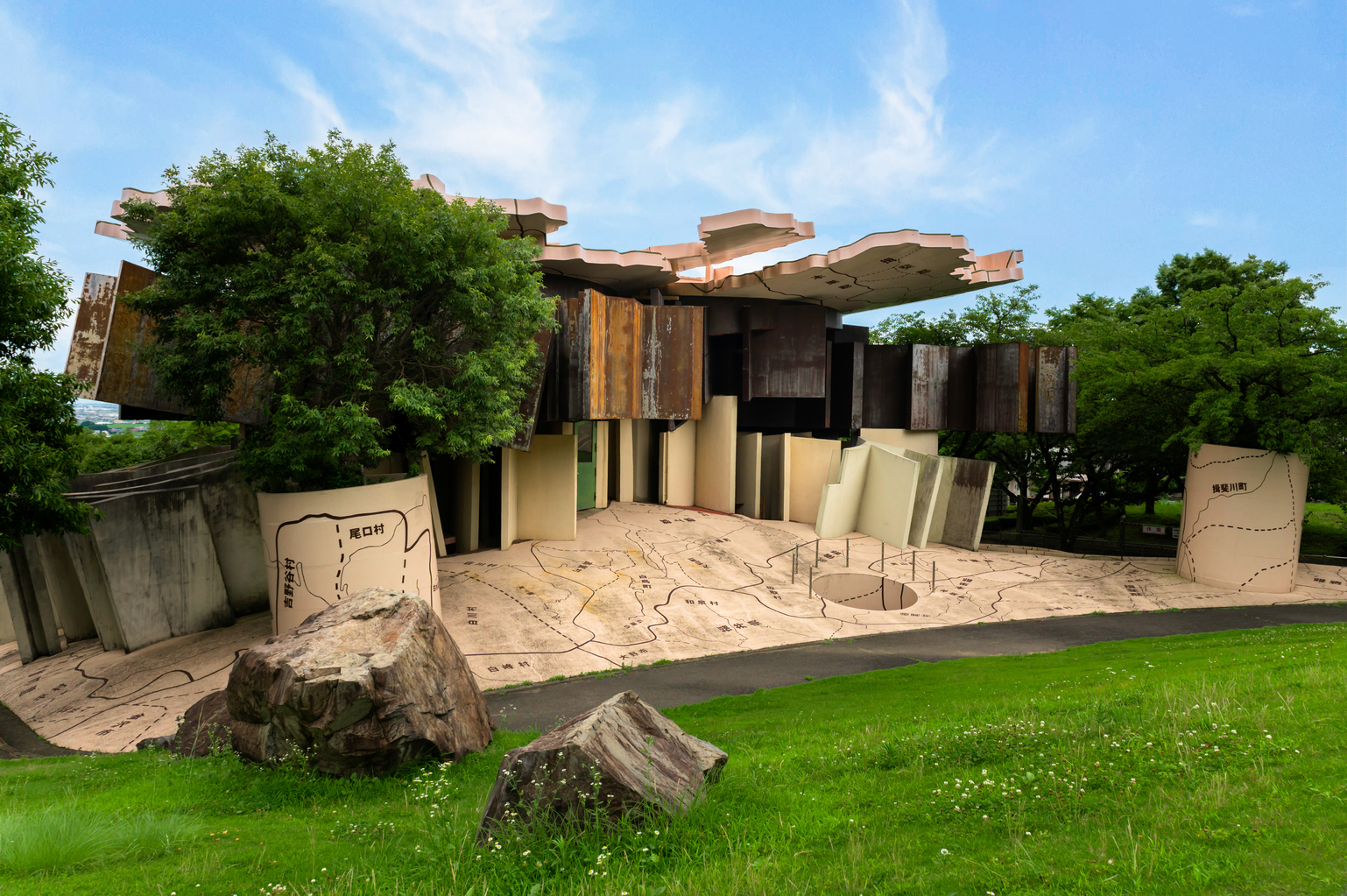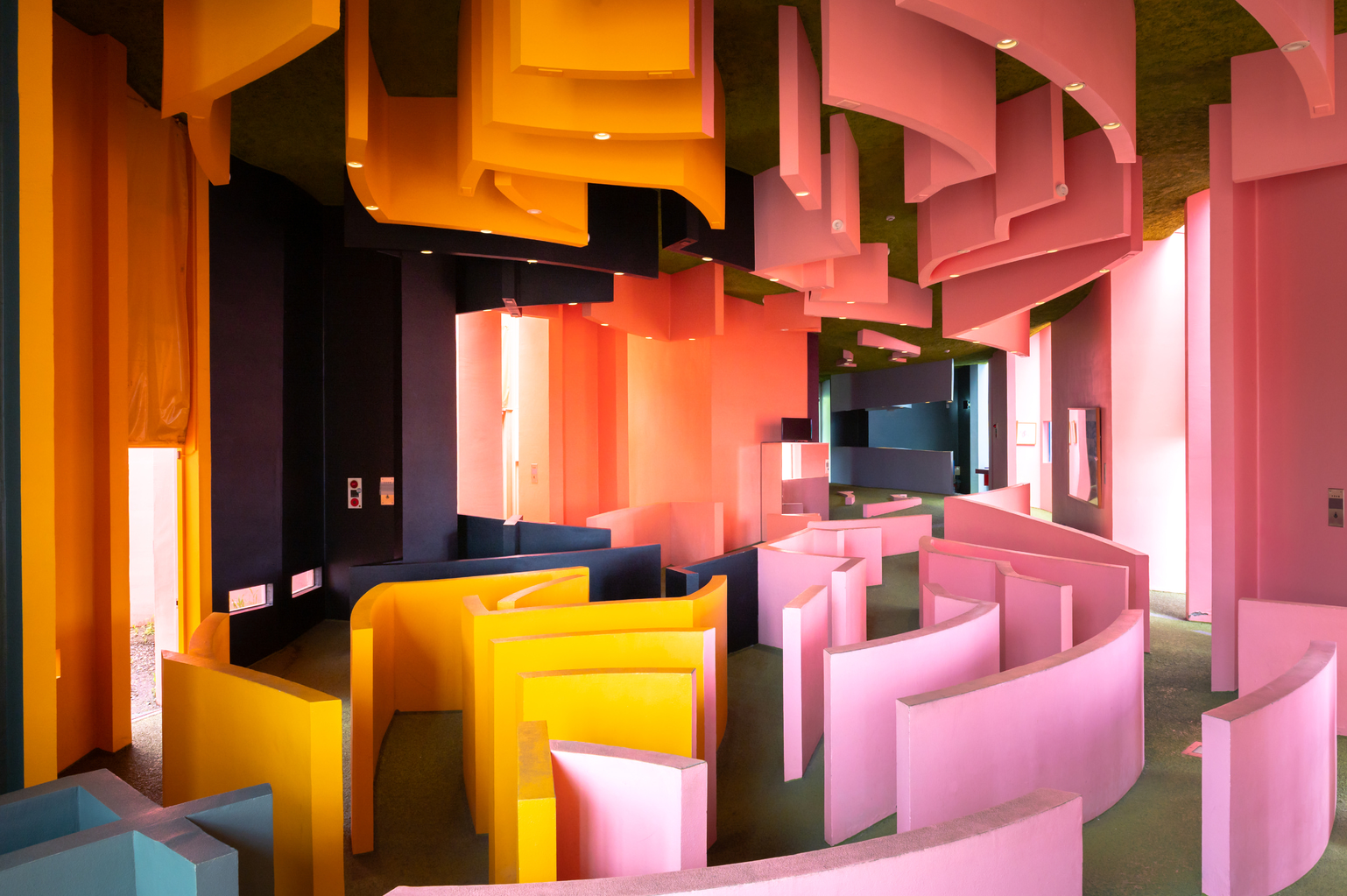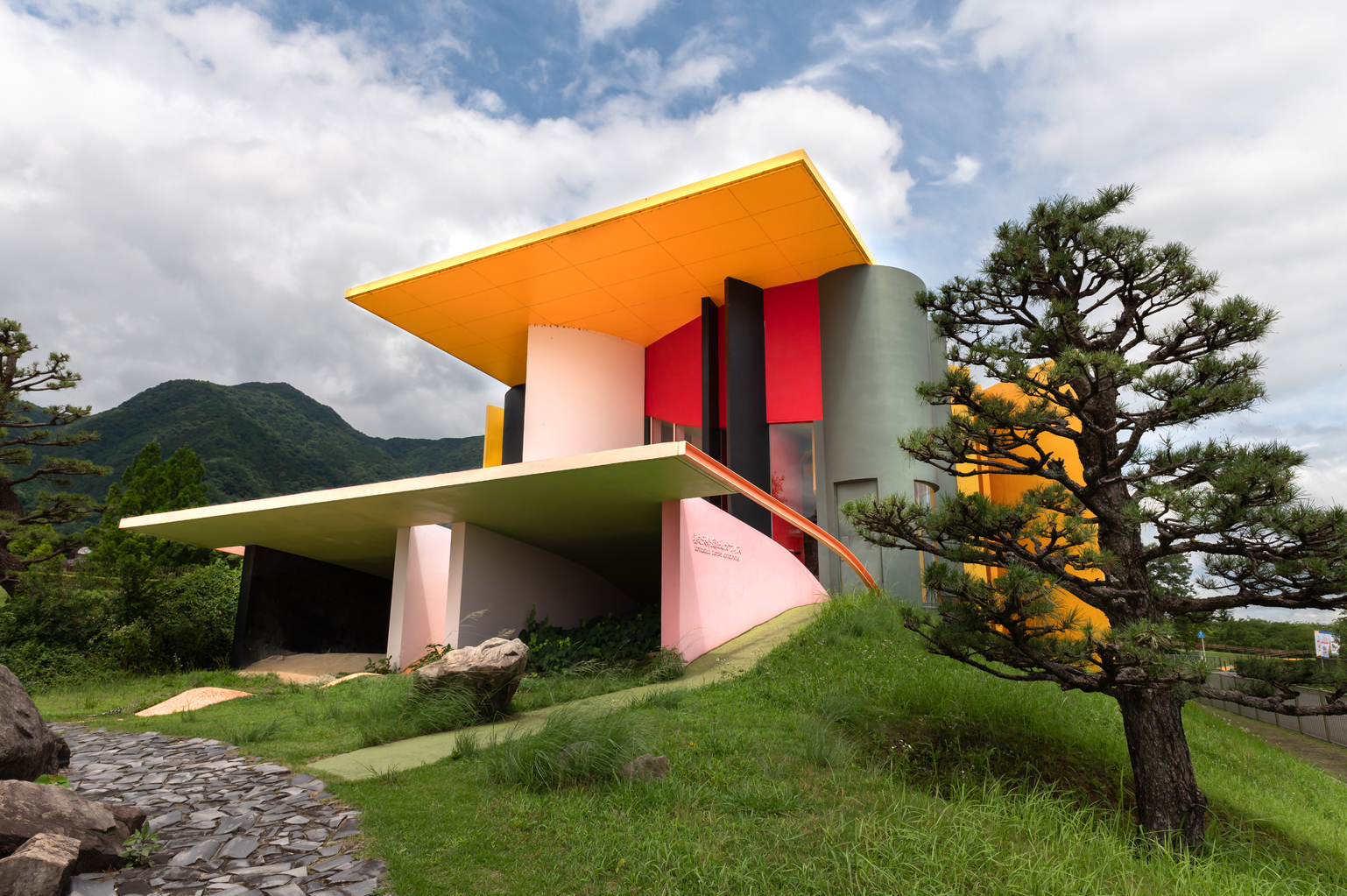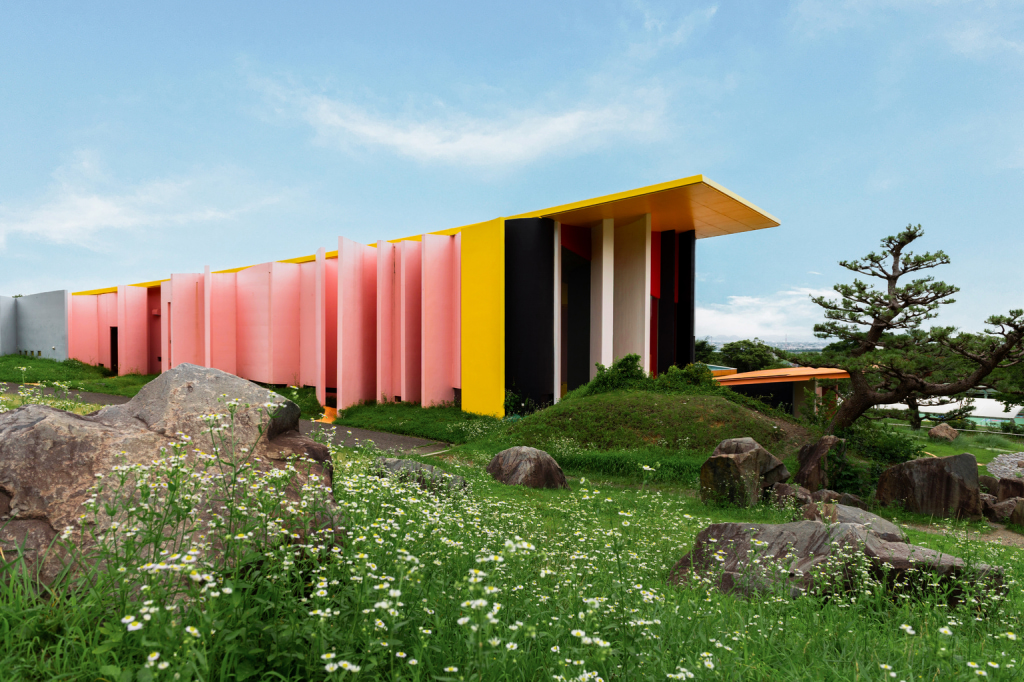To some, architecture is defined by how materials are constructed into usable structures; It’s a passive service that facilitates life, business and society. For Shusaku Arakawa and Madeline Gins, architecture has the ability to rewire our brains, allow us to experience the world in new ways and, ultimately, give us the key to immortality. It’s a bold claim, but one that gave rise to the Site of Reversible Destiny, an experimental art project that was over 30 years in the making, now found within the verdant landscapes of Gifu Prefecture.
Existentialism Meets Architecture
Arakawa and Gins’ goal was to construct new living environments that allowed humans to overcome death. By challenging traditional notions about how space should be organized, the duo deliberately incorporated layouts in their designs that constantly stimulated the physical and mental self. To some, their designs might be seen as unexpected, awkward and inconvenient, but to Arakawa and Gins, the feeling of comfort was the precursor to death. To them, it was important that humans maintained a dynamic relationship with their environment, where people must overcome challenges and problems on a daily basis in order to sharpen the mind, boost the immune system and, eventually, defy death.
“Most people, in choosing a new home, look for comfort: a serene atmosphere, smooth walls and floors, a logical layout. Nonsense. People, particularly old people, shouldn’t relax and sit back to help them decline,” said Arakawa in a 2005 interview with Newsweek.

Site of Reversible Destiny
A visual feast of haphazard shapes, paths made awkward to navigate and a clashing palette of colors, Arakawa and Gins’ designs are immediately recognizable. While the Site of Reversible Destiny is the largest manifestation of their collective philosophy, it is not the only example of their work in Japan. Located on a main road in Tokyo, in stark contrast to the surrounding apartment blocks, are the colorful and dream-like Reversible Destiny Lofts Mitaka.
The design of these apartments was inspired by Helen Keller and is intended to reflect her ability to overcome challenges and alter the course of her own destiny. In these spaces, participants are forced to actively negotiate even the simplest of tasks, keeping their minds engaged with their surrounding environment — an intentionally designed resistance against an otherwise looming physical and mental stasis.
Let your Inner Child Run Free
In a corner of Yoro Park in rural Gifu Prefecture, the Site of Reversible Destiny invites us to perceive our surroundings from a novel perspective — as though we are wide-eyed toddlers experiencing life for the first time. Upon arrival you’ll discover undulating surfaces, uncomfortable spaces, dead-end labyrinths, clashing colors and objects in unexpected places.
The curious structures have outlandish names like Critical Resemblance House, Zone of the Clearest Confusion, Gate of Non-Dying and Exactitude Ridge. This enormous 18,000-square-meter installation is a work of avant-garde art waiting to be explored and there is no set route — you’re free to examine it in any way you please. The ability to roam freely in such an unknown and absurd space gives a feeling of unease at times, but being let loose in this fantastical environment is a thrilling experience. Peer through doors leading nowhere, walk along the precarious ridges and climb as far as you can. Just be sure you wear appropriate footwear and watch where you’re going, as uneven ground and large cavities lurk around every corner.
The Fountain of Youth
It takes about an hour by train from Nagoya to Yoro Station, the closest train connection to the Site of Reversible Destiny. The town of Yoro is — not coincidentally — the birthplace of an ancient folktale that overlaps with Arakawa and Gins’ desire to defy death.

Site of Reversible Destiny
Upon arriving at the station, dozens of gourds of different shapes and sizes hang from the main station building’s ceiling. The legend tied to this curious decoration can be traced back over 1,300 years in time, when a poverty-stricken father and son lived in the area. The son worked hard to support his father, but always felt bad that he could not provide well enough for his father to afford his favorite drink of sake. One day, the boy was walking by a nearby waterfall when he noticed alcohol spouting up from the ground. He filled up his gourd flask and took it back to his father who, after taking a sip, returned to a youthful state. Empress Gensho — regent at the time — heard the rumors of this alleged fountain of youth and made her way to Yoro to see it for herself. After bathing in the magical spring water, she was so impressed that she changed her reigning era’s name from Reiki to Yoro (meaning “to nourish the aged”) in its honor.
Whether or not you believe the fountain of youth exists in Yoro, it’s a wonderful sleepy town known for its magnificent seasonal displays, especially in spring and autumn. It’s also home to Yoro Falls, one of the top 100 best waterfalls in Japan. Yoro Park — which encompasses both the waterfall and the Site of Reversible Destiny — is dotted with other sights and facilities like shrines, springs, a children’s amusement park, golf and tennis facilities and even camping. The Recamp Lodge area opened in July this year, with a tent area slated to open in October, 2022.
Our Destiny is in Our Hands
The Site of Reversible Destiny is more than just a photogenic physical space. The overarching concept encourages all who visit to apply these death-defying principles to our own lives and realize that staying comfortable and content are not end goals. It reminds us of how important it is to step out of our comfort zones, because that’s where we learn who we really are. (Just don’t forget to watch your step as you go.)
You’ll discover that the Site of Reversible Destiny is much more than a random assortment of colors, shapes and experiences — it’s an existential puzzle waiting to be solved. The question is: Are you ready for it?

Site of Reversible Destiny
Good to Know Before You Go
1. Be prepared
This space is best explored with sturdy shoes and comfortable clothing. You’ll be exposed to the elements, so bring water, a towel and a parasol in summer, and a jacket in cooler seasons.
2. Watch your step
Jagged rocks, gaping holes and slippery slopes (especially after it rains) are par for the course, so take care not to get distracted and lose your footing as you explore.
3. Some areas are not universally accessible
Due to the nature of the terrain, not all areas are accessible by wheelchair users or those with baby strollers. Staff members can advise on safe routes around the space.
4. Make sure you have snacks
Though there are some restaurants and food stalls within Yoro Park, opening times and days may vary outside of the busy season. There aren’t too many other spots nearby, so bring a packed lunch or some snacks to make sure you don’t go hungry.
5. Take a break at Yoro Station
As trains generally only pass through about once an hour, double check train times before heading out. However, if you have some time to kill between 10am and 4pm, it’s not the end of the world. The Yoro Station Tourism Center — opened in April, 2022 — is an air-conditioned oasis touting free wifi, free coffee and tea, and staff with knowledge of Yoro’s many charms. You can also purchase local specialties like dried shiitake, sake-lees cake and other delicious items while you’re here.
More Info
The Site of Reversible Destiny
1298-2 Takabayashi, Yoro-cho, Yoro-gun, Gifu Prefecture
(Closed on Tuesdays and during the New Year’s holidays)
Website: yoro-park.com/en
More Architectural and Arty Adventures Await:









